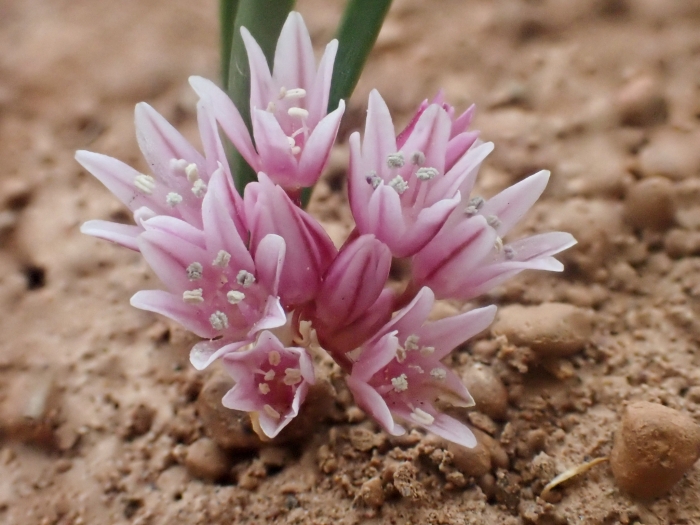Tolmie’s Onion
(Allium tolmiei)
Tolmie’s Onion (Allium tolmiei)
/
/

© Chloe and Trevor Van Loon
CC BY 4.0
Image By:
© Chloe and Trevor Van Loon
Recorded By:
Copyright:
CC BY 4.0
Copyright Notice:
Photo by: © Chloe and Trevor Van Loon | License Type: CC BY 4.0 | License URL: http://creativecommons.org/licenses/by/4.0/ | Uploader: chloe_and_trevor | Publisher: iNaturalist |

























Estimated Native Range
Summary
Allium tolmiei, commonly known as Tolmie’s onion, is a perennial herb native to the mountainous regions and high desert scrublands of the Pacific Northwest, specifically Idaho, eastern and central Oregon, southeastern Washington, northwestern Nevada, and northeastern California. It thrives at elevations of 1,300–9,200 feet where it is adapted to the dry, rocky soils of its native habitat. This plant typically forms ovoid to oblique bulbs up to 1 inch long and produces bell-shaped flowers with white to pink tepals that have distinctive reddish midribs. The flowering season occurs in late spring to early summer, and the flowers are modestly showy, attracting pollinators such as bees.
Tolmie’s onion is valued for its ornamental flowers and is often used in rock gardens, native plant gardens, and as a border plant. It is drought-tolerant, making it suitable for xeriscaping and gardens with low water availability. In cultivation, it requires well-drained soil and full sun to part shade. While it is generally low-maintenance, it can be susceptible to bulb rot if overwatered or planted in poorly drained soils. There are two recognized varieties: Allium tolmiei var. tolmiei and Allium tolmiei var. persimile, both of which share similar cultivation needs and ornamental qualities.CC BY-SA 4.0
Tolmie’s onion is valued for its ornamental flowers and is often used in rock gardens, native plant gardens, and as a border plant. It is drought-tolerant, making it suitable for xeriscaping and gardens with low water availability. In cultivation, it requires well-drained soil and full sun to part shade. While it is generally low-maintenance, it can be susceptible to bulb rot if overwatered or planted in poorly drained soils. There are two recognized varieties: Allium tolmiei var. tolmiei and Allium tolmiei var. persimile, both of which share similar cultivation needs and ornamental qualities.CC BY-SA 4.0
Plant Description
- Plant Type: Herb, Bulb
- Height: 0.5-1.5 feet
- Width: 0.5-1.5 feet
- Growth Rate: Rapid
- Flower Color: Pink, Red, White
- Flowering Season: Spring, Summer
- Leaf Retention: Deciduous
Growth Requirements
- Sun: Full Sun, Part Shade
- Water: Medium
- Drainage: Fast, Medium, Slow
Common Uses
Bee Garden, Butterfly Garden, Low Maintenance, Rabbit Resistant
Natural Habitat
Native to the mountainous regions and high desert scrublands of the Pacific Northwest
Other Names
Common Names: Tolmie’s Onion, Tolmie Onion, Wild Onion
Scientific Names: , Allium tolmiei, Allium douglasii var. tolmiei,
GBIF Accepted Name: